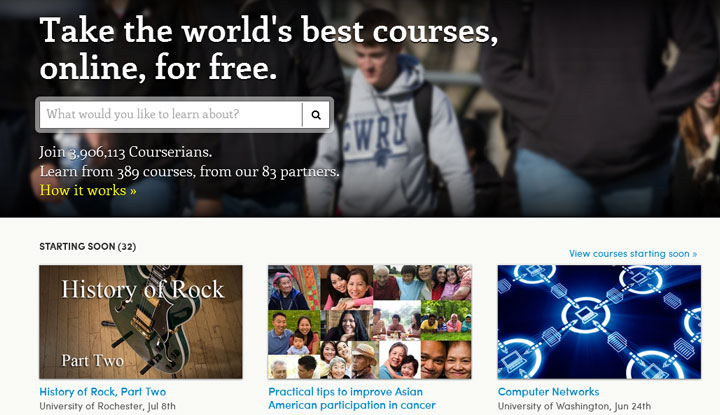Online education is blowing up.
[pullquote align=”right”]”Demand for e-learning across various industries is on the rise, especially within education. It is estimated that the e-learning industry will be around $49 billion (with a “B”) by 2014.” (Source: LearnDash)[/pullquote]
We have everything from higher-ed classes with online platforms like Coursera and 2u (formerly 2tor), to mid-level education like Lynda, TreeHouse, Udemy and Skillshare, all the way to basic how to platforms like SnapGuide, Instructables; and millions of online videos and guides already available on the Web.
In short, it’s clear that consumers are becoming more comfortable with the concept of online learning.
But while all of these platforms do many things really well, what about skills that require a physical, hands-on experience? Many of us want to learn how to cook, how to build, how to paint, how to fix things … hands-on skills that would improve our lives forever. But sometimes watching an online video isn’t enough.
The Challenge of Teaching Real World Skills
For businesses that want to offer online learning experiences for their customers, overcoming the online video learning curve is the biggest challenge of all.
Yet the real reason people don’t learn new skills isn’t always because it’s too hard. There’s a simple way to start almost anything, especially when someone shows you. The real reason people don’t learn new skills is because it’s often intimidating and inconvenient, especially when it’s something hands-on, like cooking or DIYing an upholstery project.
There are a lot of intimidation factors and concerns that the “teacher” must address, such as:
- What tools or ingredients do you need?
- Where do you get them?
- What if you get the wrong thing?
- How much money should you spend?
- How do you know if you did it right? What if you have a question?
How to Remove Online Learning Barriers
If you want to teach your customers online, in a way that sticks, try to remove those barriers one by one using the following 5 tips:
1. Provide or explain the tools.
Remove the need to figure out what tools to buy by giving your audience everything they need — or by making sure it’s extremely clear what to get and how to get it.
2. Avoid jargon.
Online users are coming to your online course, webinar or training session not to hear jargon, but to hear jargon explained. Remember that, and remove the confusion caused by jargon by explaining things plainly.
3. Build a relatable brand.
Use a voice and brand that people can relate to. Everything in your online video doesn’t have to look perfectly polished. Use your apartment kitchen instead of a commercial kitchen to record that cooking video, or your real home office.
4. Build credibility.
The teacher shouldn’t just be a prerecorded video. The teacher should be a person that they can trust, and turn to. Too many students for the teacher to handle? That’s where building a community (i.e. a private forum, group, email list, etc.) becomes vital in creating a positive and personal online education experience. Your students can and will help each other.
5. Help customers understand “why”.
Finally, don’t just tell your audience what to do. Help them understand why they’re doing it, so that they can take those concepts and apply them to their next experience with the skill.
Once you remove these barriers, all that’s left is doing. And I believe you’ll find that when someone is motivated to learn (and nothing is in their way) there’s very little you can do to stop them.
David Spinks is a community builder and entrepreneur. CoFounder and CEO at Feast. Co-Founder of TheCommunityManager.com.
© YFS Magazine. All Rights Reserved. Copying prohibited. All material is protected by U.S. and international copyright laws. Unauthorized reproduction or distribution of this material is prohibited. Sharing of this material under Attribution-NonCommercial-NoDerivatives 4.0 International terms, listed here, is permitted.




